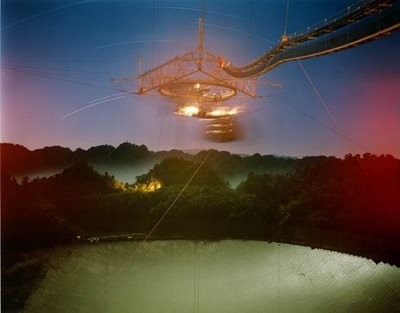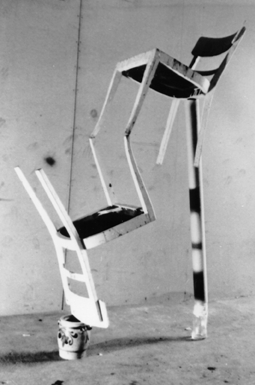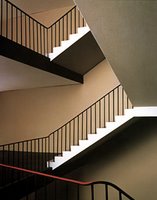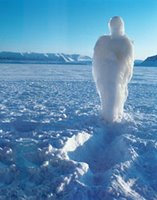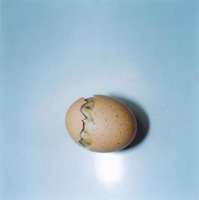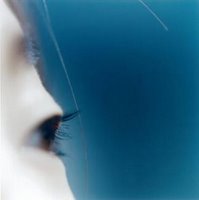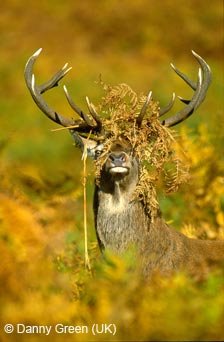
In 2006 the glass turned half full - or half empty, depending on wether you belong to the species of confessional urbanites or new age country bumpkin. This year, for the first time in human history, half of the global population has chosen (or was forced economically) to survive in a habitat that is defined by speed, size, density, diversity and last but not least pollution and noise.
The great thing about this exhibition is the fact that it is so accessible, digestible. You are actually experiencing one of the displayed Mega Cities - London - either as a resident, or as a tourist during your weekend trip. And the smartly curated display does make you wonder and ponder a lot:
 For instance about the densitiy issue. Think London is crowded? How must it be in Cairo then with about 35.000 - thirty five thousand - inhabitants per squaremile, which is nearly 10 times as dense as London (4.5K) You can really grasp this through this cleverly material-printed 3-D model above, the higher the topography the higher the density. BTW: The most densely populated disctrict in the world is Monkok on the Hong Kong peninsula, with an unbelievable 250.000 inhabitants per squaremile. One of the things you should experience in your life!
For instance about the densitiy issue. Think London is crowded? How must it be in Cairo then with about 35.000 - thirty five thousand - inhabitants per squaremile, which is nearly 10 times as dense as London (4.5K) You can really grasp this through this cleverly material-printed 3-D model above, the higher the topography the higher the density. BTW: The most densely populated disctrict in the world is Monkok on the Hong Kong peninsula, with an unbelievable 250.000 inhabitants per squaremile. One of the things you should experience in your life!Also, even though I hear my native tongue nearly every day in Zone 2 (that is excluding all ze Jerman tourists on sightseeing) and the fact that there are at least five German number plates within 10 mile radius of my flat, I am always stunned to hear the latest immigration figures: 40.000 Deutsche call London their home, like me. That's the size of a so-called Middle Town, or one load at Stamford Bridge (Chelsea Stadium for non-locals or footie ignorants) However, the really striking statistic is the heterogenity of London immigrants. Ok, there are about 170K indians and another 85K from Bangladesh dominating a little bit, but other than that, there seem to be about 20-40 thousand from almost a two dozen of countries, which only mirrors the true cosmopolitan spirit of the Big Smoke. Go to L.A. and you have 1.5 million Mexicans, another quarter million from El Salvador and 150.000 from Guatemala, wheras the Germans stand at 25.000, and Brits bring it to 35K.
 Speaking of Latinos, Mexico City is a monster in size and of smog, mainly driven by pollution from cars supported by a totally misled transport policy. In Mexico City, water is more expensive than gas. That is sick! Al you have another mission...Ken wanna emmigrate and become mayor...? When comparing cities like L.A. withg Tokyo on issues like puplic transport, the different styles of life couldn't be more drastic: only 7% of L.As population commutes to work on public transport (and it is mainly the poor) while a staggering 78% rides the mega efficient subway in Tokyo.
Speaking of Latinos, Mexico City is a monster in size and of smog, mainly driven by pollution from cars supported by a totally misled transport policy. In Mexico City, water is more expensive than gas. That is sick! Al you have another mission...Ken wanna emmigrate and become mayor...? When comparing cities like L.A. withg Tokyo on issues like puplic transport, the different styles of life couldn't be more drastic: only 7% of L.As population commutes to work on public transport (and it is mainly the poor) while a staggering 78% rides the mega efficient subway in Tokyo.Apart from huge info-tainment walls, cubicles and videos, the show also includes art that addresses the subject matter. Richard Wentworth has made a site-specific video installation and some of Andy Gursky's large-scale photographies are on display. But the real winners are rather unknown artists: Nagoa Hatakeyama has photographed a 1/1000 scale 3-D model of Tokyo with the effect that it looks absolutely real, if clean and bar any humans or cars. The model itself contains thousands of buildings, and the texture actually comes from real photographies of the originals. This conceptual approach of a russian doll achieves remarkable aesthetical cleansing.
 Then there is a weird vitrine full of every day objects and memorabilia constructing utopian city; quite impressive craftsmanship as well.
Then there is a weird vitrine full of every day objects and memorabilia constructing utopian city; quite impressive craftsmanship as well. My favourite piece in the entire Turbine Hall-specific installation is a wall of photos by South African artist Kendell Geers documenting life in Johannesburg: the decay, tristesse and violence exuding 12 photos of inner city life should be shocking, but you have seen this before and heard the hideous crime stories and taxi wars. No, it is the 80 pictures from affluent suburbia that are truly disturbing, because most foreigners probably have no clue how much armed response there apparently needs to be (that is private companies protecting your property with guns and dogs) and that a multi-million villa actually resembles more a fully protected army camp in a combat zone with kilometers of barbed wires and electric fences. Very sad, but very much a reflection of the world order and safety realities in many countries.
I am glad I have lived in big cities like London, Hong Kong, NYC, LA, Singapore, Tokyo or just visited them, but somehow this Tate visit came at a time when we are thinking about moving a bit further out, bigger place with garden, getting a dog and doing more outdoors in the parks, forests and along rivers and ocean shores. It seems like I had my fair share of urbanity, but my glass is becoming half full - in favour of the country side.













